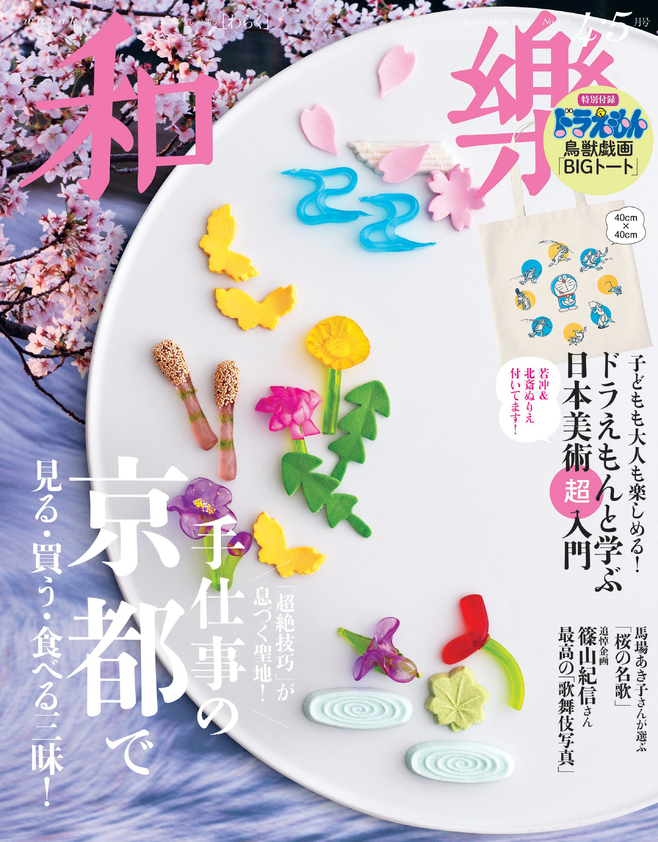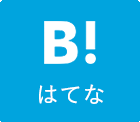Hokusai’s creativity made him a man ahead of his time!
Once the 浮世絵 (ukiyo-e, a genre of art depicting everyday life in the 17th to 19th century) artist 葛飾北斎 (Katsushika Hokusai, 1760 – 1849) gained a reputation from his illustrations in reading books, apprentice hopefuls rushed to study under him. Drawing a copybook one by one by hand for each of them would be too time-consuming and troublesome, so Hokusai came up with the idea of creating woodblock prints from his drawing models and patterns and publishing these drawing manuals en masse. Normally, these types of illustration copybooks from a master to his disciples are strictly confidential material, but allowing them to be published and available to anyone seems befitting of Hokusai.
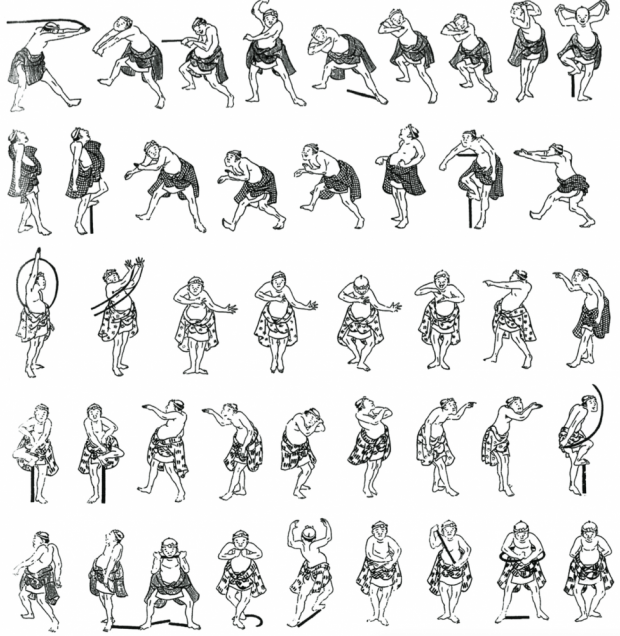 Katsushika Hokusai, 「踊独稽古 登り夜船」 “Dance Instruction Manual – Ascending Night Boat,” 1815, Nagoya City Hosa Library.
Katsushika Hokusai, 「踊独稽古 登り夜船」 “Dance Instruction Manual – Ascending Night Boat,” 1815, Nagoya City Hosa Library.
Hokusai’s most representative woodblock-printed copybook is the famous 『北斎漫画』 (“Hokusai Manga”) first printed in 1814. In it, the artist attempted to depict all of the universe’s creations. However, his 『踊独稽古』 (“Dance Instruction Manual”) published afterwards in 1815 held even more astonishing content. That is, it featured a visual tutorial of the 歌舞伎 (kabuki, traditional Japanese theatre) dance choreography directed by Fujima Shinzaburō.
As you can see in the provided image, the dance steps are drawn from start to finish one after another to create a sort of self-learning manual. This frame-by-frame presentation read from right to left seems like the prototype of animation. Of course it would be Hokusai and his inestimable power of imagination that could produce this type of panel layout in the Edo period! In addition, since this type of drawing was very easy to understand at first glance, Hokusai earned high praise overseas as well. There is no doubt that Hokusai was a creative genius.
This is how you tie a tennugui!
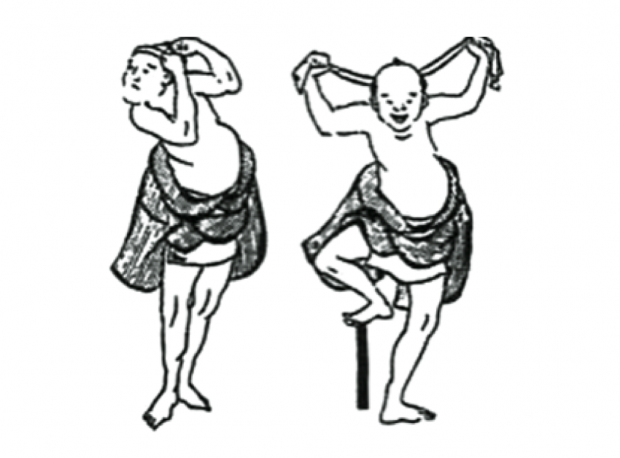
On the top upper right Holding both ends, pull open the tennugui (Japanese hand towel) and place the middle on the back of your head. Then bring the ends forward and tie them tightly together. These images explain the first few steps so clearly that no words are necessary to understand the actions.
Follow the lines!
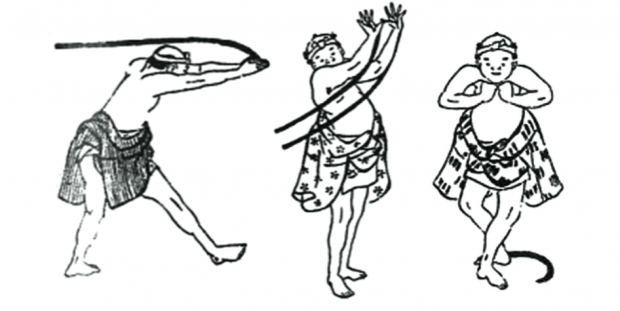
Hokusai has provided easy-to-comprehend lines to represent the movement of one’s hands and feet. Following these lines makes it easy to learn the dance moves on your own! These same types of arcs and lines denoting movement are still used in manga today.
Thorough, step-by-step drawings make it easy to learn!
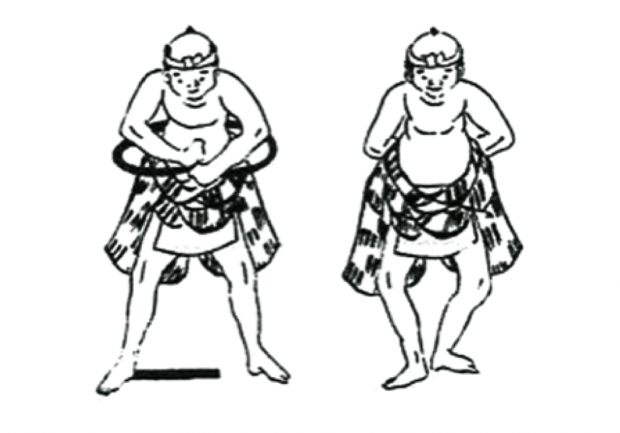
In this scene, it is shown that one should move their hands from behind the back, swinging them forward around the level of their hips, and hit their fists together – all while moving their right foot to have their feet shoulder-width apart. Looking at this dance choreography makes us want to try this dance with some music!
A timeline of Hokusai’s animation skills
The following two images were published in “Hokusai Manga”, and they depict various dance and bōjutsu (a Japanese martial arts style using a staff) sparring sequences. These images serve as a precursor to Hokusai’s animation-like, frame-by-frame illustrations published the subsequent year in “Dance Instruction Manual”.
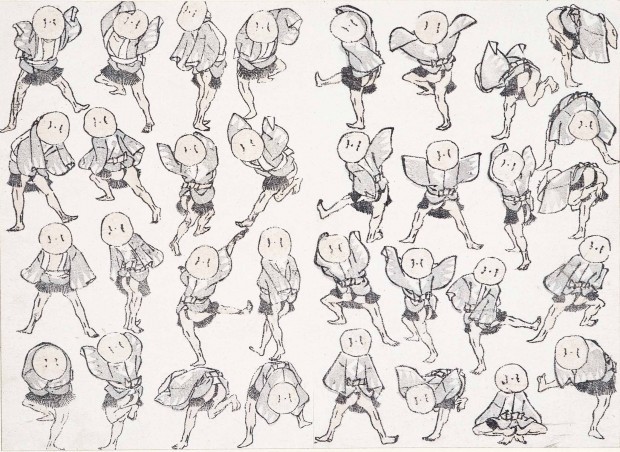 “Suzume odori (Sparrow Dance),” Hokusai Manga volume 3, 1815, Urakami Collection.
“Suzume odori (Sparrow Dance),” Hokusai Manga volume 3, 1815, Urakami Collection.
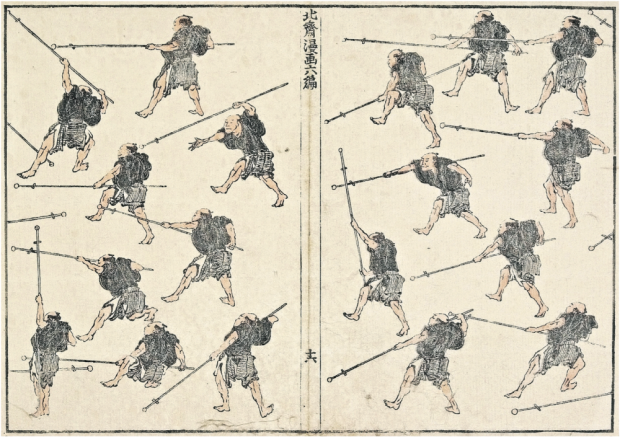 “Bōjutsu (Japanese martial art that uses a bo staff),” Hokusai Manga volume 6, 1814. Image: Bridgeman Images (PPS)
“Bōjutsu (Japanese martial art that uses a bo staff),” Hokusai Manga volume 6, 1814. Image: Bridgeman Images (PPS)
Translated and adapted by Jennifer Myers.




